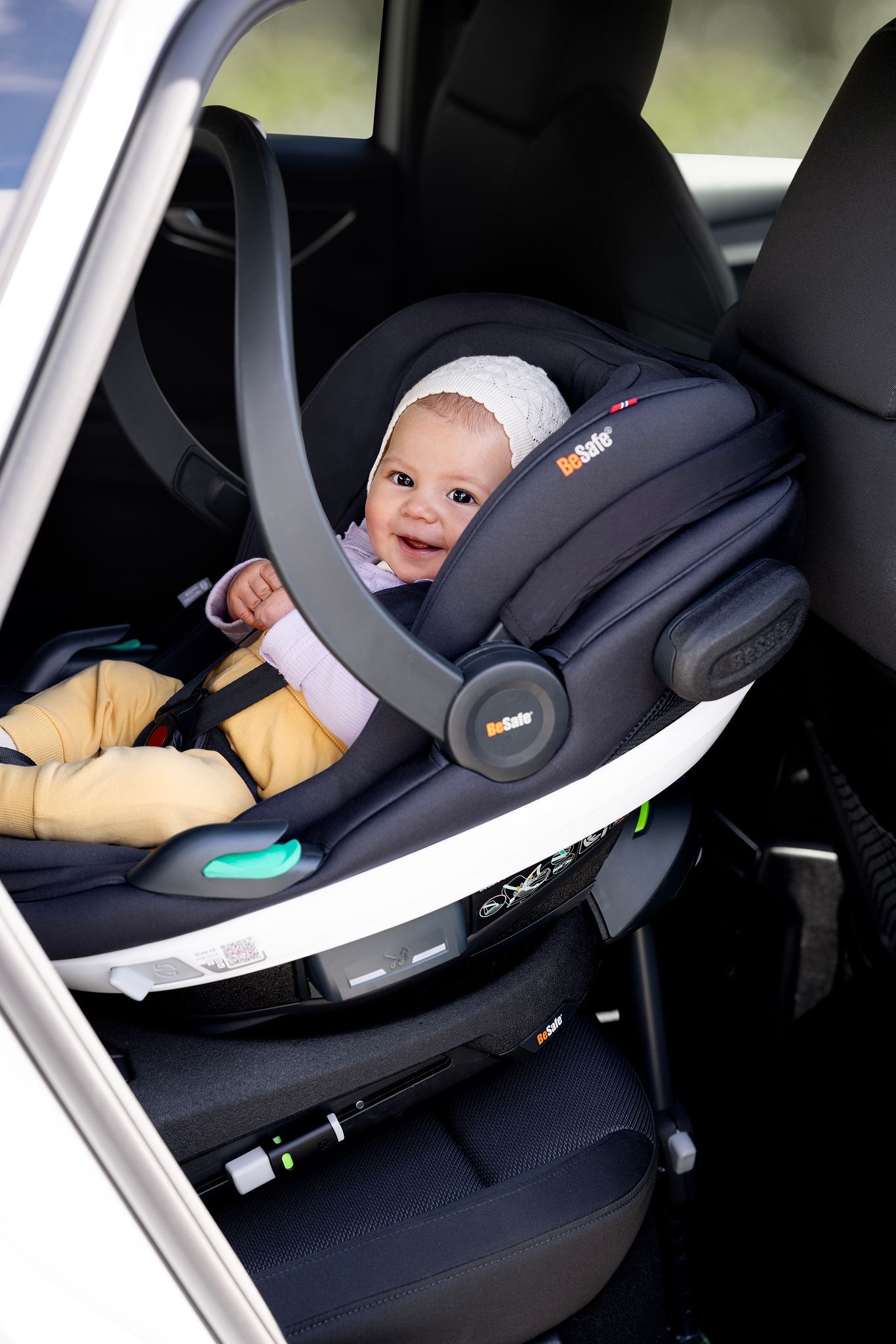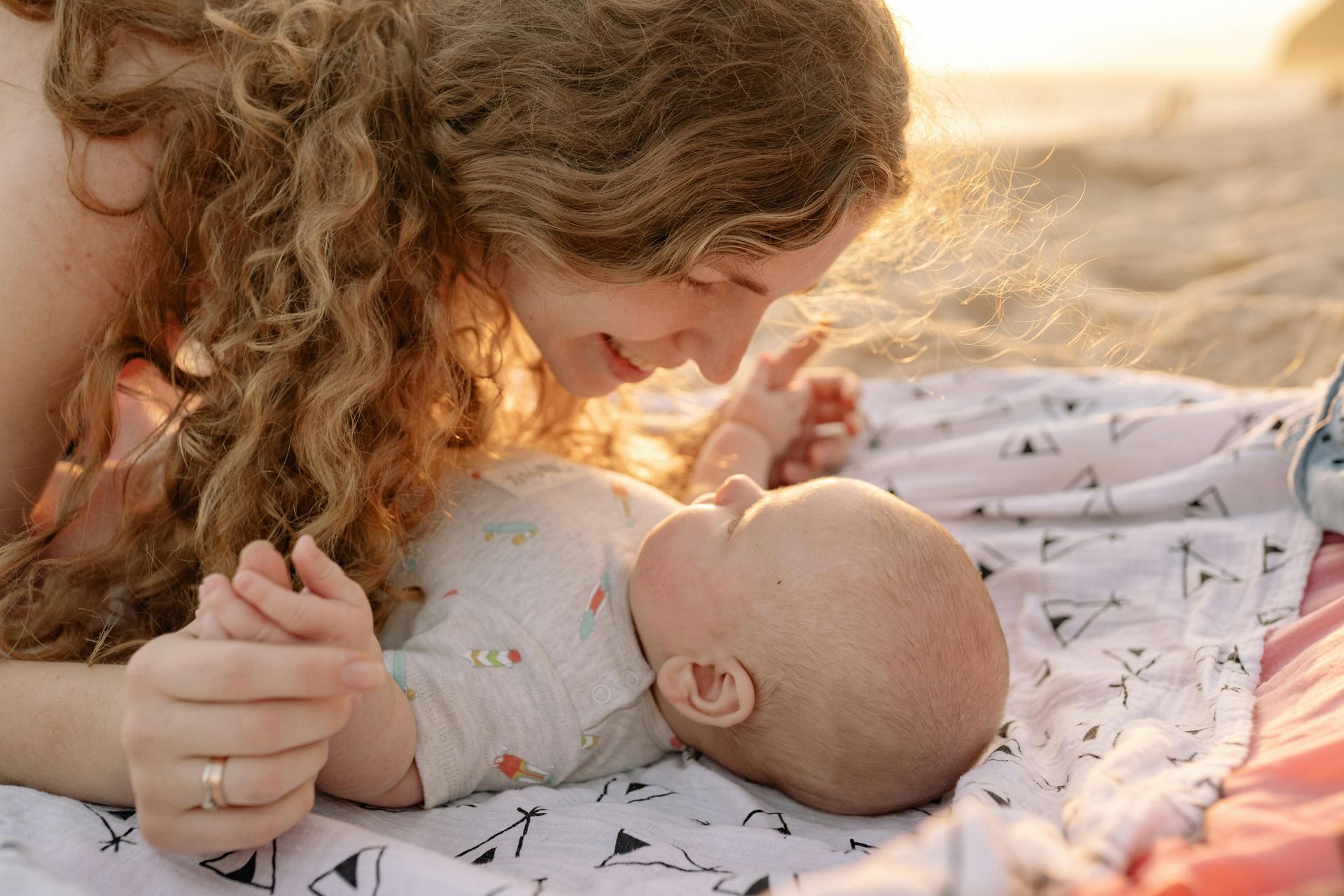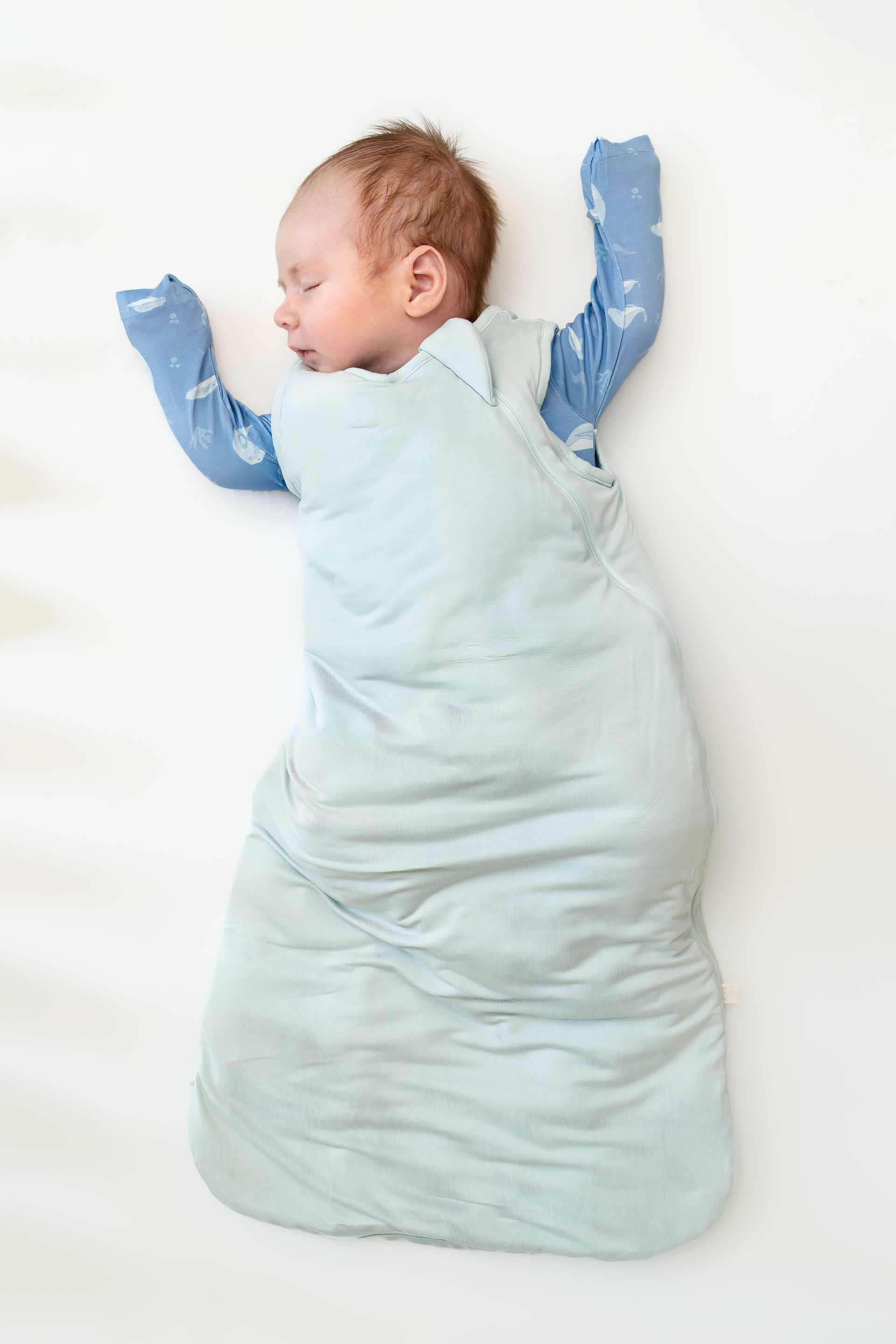How to Build a Bedtime Routine
• August 8, 2022
When you want to make positive changes to your child’s sleep, there are a few foundational pieces you want in place – a safe sleep environment
conducive to sleep, an age-appropriate schedule
for your child, and ensuring all of your child’s nutritional and emotional needs are met.
One of the best ways to prepare your child’s body for sleep is by creating a consistent bedtime routine. If the idea of a consistent bedtime routine is new to you, I want you to know that it doesn’t need to be an elaborate routine.
In fact, when I first started creating my son’s bedtime routine, we started with just a bedtime story, because I knew reading before bed has many benefits, like vocabulary development. Then, we built around that and expanded what we did each night.
Regardless of whether you already have a strong bedtime routine in place, or whether you consider yourself lucky if your child manages to get into their pajamas each night before they fall asleep, we’ll go over what a good bedtime routine consists of and how to build one that works for your family.
Remember that as you build your child’s bedtime routine, keep it simple to start – things you’re able to consistently do. Then in time, you can add to it.
Why is a bedtime routine important?
Bedtime routines serve four major purposes:
- They give your child a chance to wind down from their activities
- They provide a strong, clear cue that bedtime is coming
- They allow time to sit and be with your child
- They offer an opportunity to fill your child’s emotional tank
Each of these elements is important for setting a good sleep foundation, so let’s explore each one.
Bedtime routines allow your child to wind down
When we think about our child’s sleep needs, we want to consider offering a transitional period for them to calm down before going to bed.
Just as we don’t jump into bed right after running errands all day, our children shouldn’t be expected to immediately go to bed after playing outside or being engaged in other activities. Chances are, their bodies just won’t be ready for that.
When you have a bedtime routine, it offers a clear transition from fun and play to calm and relaxing, making sure that your child is ready for the sleep ahead.
Bedtime routines provide a strong cue that sleep is coming
One of the benefits of a bedtime routine is that it alerts your child’s body that sleep is coming. When you do the same activities each night, your child’s body receives a signal that it needs to begin producing the appropriate hormones needed for sleep.
Not only will your child’s body begin to prepare for sleep, but knowing what to expect can help prevent bedtime battles
with your little ones.
Bedtime routines give you a chance to sit and be with your child
If you work away from your children throughout the day, having a chance to be with them before they go to bed is likely a much welcomed activity.
Even for parents who stay at home with their children all day, being able to sit with your child after the chaos of the day is a great way to build a strong connection with them.
A good bedtime routine allows for that special bonding time, which is beneficial to both parent and child.
Bedtime routines offer an opportunity to fill your child's emotional tank
Before expecting your child to sleep all night, you want to make sure you’ve filled their emotional tank. For children who are moving away from co-sleeping in their parents’ bed to sleeping in their own space, it can be hard to ask them to sleep 12 hours alone suddenly.
Even for children who do sleep alone but are used to being around people all day, it’s a big change to go from constant touch, support, and communication to being alone.
Spending time cuddling and hugging your little one during the bedtime routine can give you the confidence and reassurance that their tank is filled, and that they can sleep all night and look forward to seeing you in the morning.
How do you build a bedtime routine?
Now that we know why each element of the bedtime routine is important, it’s time to build a routine that works for your child and family.
To build a solid bedtime routine, we want to focus on each of the 4 elements above.
Winding Down
To help your child begin to wind down, you can begin with a bath or, if you don’t bathe your child every night, you can wash your child’s hands and face. Then, change them into a clean diaper and pajamas, and for older kids, brush their teeth.
If your little one still drinks milk, now is the perfect time to offer it. By offering milk at the beginning of the bedtime routine, we’re allowing a nice buffer to prevent a feed-sleep association from developing. As a side note, if your little one is drinking milk, consider brushing their teeth after they finish their bottle to ensure proper dental hygiene.
Bonding Activity
Next, we want to do a bonding activity. We’ll want to keep things calm and not too stimulating during the bedtime routine, so things like reading books, singing songs, saying prayers, or even saying goodnight to all of their toys is a great option.
For older children, talking about their day and asking them about their favorite moments is a nice way to end the day on a positive note.
Fill Their Emotional Tank
Throughout the bedtime routine, I always encourage my clients to offer lots of hugs, cuddles, and kisses. This is the time to fill your child’s emotional tank before they head off to sleep for the night, so get creative!
I know some people assume that when you sleep train your child, you lose out on the bonding experience. But just because your child is able to fall asleep independently doesn’t mean you can’t hold, hug, and cuddle them ever again. Expecting them to sleep all night doesn’t mean that bond needs to be erased.
Remain Consistent
It’s nice to have predictability, so staying consistent each night will help your child anticipate what’s to come and offer them security and stability.
If you know that creating a strong routine is something that would benefit your family but you feel stuck and unsure how to begin, book a call with me today! When I work 1:1 with families, creating a bedtime routine that is personalized to their unique needs is one part of the process.
Let’s chat today
to get started on better nights ahead!

Choosing a car seat is one of the most important decisions you’ll make as a parent. It’s not just about convenience — it’s about giving your child the best protection on every journey . In the UAE, where we drive long distances, face busy roads, and deal with extreme heat, the right car seat matters more than ever. But with so many options, how do you know which one to choose? Here are our top 4 tips to make car seat shopping easier — and safer. 1. PRIORITIZE SEATS THAT UNDERGO THE TOUGHEST CRASH TESTING Not all car seats are created equal. Many parents think if a seat is “legal,” it must be safe — but that’s not always true. ECE R44 : The most basic standard, now phased out in Europe. ECE R129 (i-Size) : Stricter testing with better head, neck, and side-impact protection. The Swedish Plus Test : The toughest crash test in the world — and the gold standard. What makes the Swedish Plus Test so important? It’s the only test that measures neck forces on a child’s body in a crash. Seats that pass prove they can keep neck loads below dangerous limits — a key factor in preventing serious injury. Many car seats fail completely under this extreme test, which shows just how high the bar is. 👉 If a car seat has passed the Swedish Plus Test , you can be confident it offers the highest level of safety for your child. 💡 Remember: Legal does not always mean safe . Go beyond the minimum. 2. CONSIDER YOUR CHILD'S HEIGHT, WEIGHT, AND AGE — EVEN THE SMALLEST ONES Every child grows differently, and size matters when it comes to safety. Preemies and smaller babies : Standard carriers often don’t provide the right fit. They need extra support for the head, neck, and body, plus proper harness positioning. Twins or multiples : Planning seating for two (or more) at once requires careful choice so every child gets the safest setup. As children grow, their height and weight percentiles determine how long a seat will last. We recommend car seats with at least a 25kg weight limit and 125cm height limit , which allow for extended rear-facing travel . Why rear-facing ? Research shows it is up to 5 times safer than forward-facing for children up to 6–7 years old. Better crash force distribution across the strongest part of the body. Superior head and neck protection , preventing the whip-forward motion that can cause spinal injury. Cocoon-like shell protection against front and side impacts. 💡 Bonus for UAE parents: The BeSafe Go Beyond with Preemie Inlay was designed with neonatal nurses to support even the tiniest babies. It features a removable wedge for better harness fit and breathable mesh fabric — keeping your baby safe and cool in our hot weather. 3. MATCH THE CAR SEAT TO YOUR CAR AND LIFESTYLE Your car seat needs to fit not just your car — but your daily routine . Multiple cars? Choose a seat that’s easy to install/uninstall. Growing family? Invest in a seat with a long lifespan that can be passed down. Seat placement? Consider if it will go behind the passenger, in the middle, or side by side with another child seat. Bigger families? Narrow but safe seats can fit 3-across or work well in 7-seaters, without compromising protection. Example from our family setup: Mummy’s car : BeSafe Flex Fix 2 for Sofia (8y) + BeSafe Stretch for Leo (5y). Daddy’s car: Axkid One3 for Leo + BeSafe Flex Fix 2 for Sofia. The Axkid One3 was chosen because Daddy often removes the seat, and installation takes under 30 seconds . 👉 Key takeaway: The “best seat” isn’t the one your friend uses — it’s the one that fits your child, your car, and your lifestyle . 4. DON'T COMPROMISE — BUY FROM A CHILD CAR SEAT SPECIALIST Buying from a specialized retailer ensures peace of mind: They recommend a seat that fits your child, car, and routine . They install it correctly and show you how. If the seat doesn’t fit, they won’t install it — and they’ll help you find one that does. They’ll reinstall it whenever you need , for example when changing cars, at no extra cost. At Safety On Board , we offer 1-1 car seat consultation and hands-on support to make sure your child rides safely every time. FINAL THOUGHTS A car seat isn’t just another baby item — it’s life-saving equipment. Whether you’re bringing home a preemie, juggling twins, or moving a big kid into a booster, the right seat + the right suppor t makes all the difference. If you’re unsure where to start, contact us and book a consultation with us. We’ll help you find the perfect fit for your child, your car, and your family. Because every child in the UAE deserves the safest ride 💛 Sophie Huang is the founder of Safety on Board , the UAE’s first child car seat specialist. She is also a mom of 2 and an internationally certified car seat expert . With a passion for keeping children as safe as possbile on UAE road, she guides parents in choosing and installing the safest car seats. Sophie believes safety can be simple, stress-free, and empowering for every parent.

There’s something magical about a beach holiday — the sound of waves, salty air, and the promise of slow days in the sun. But let’s be honest: traveling to the beach with a baby isn’t exactly a vacation unless sleep is part of the equation. Whether you're heading to a resort, renting a seaside villa, or visiting family by the coast, here’s how to set your baby up for restful sleep — so everyone gets to enjoy that ocean breeze. Step 1: Know That Sleep Needs Don’t Take a Holiday Babies are creatures of habit. Their little bodies thrive on rhythm and predictability — even on vacation. But that doesn’t mean you can’t have fun or go with the flow! It just means that your baby’s sleep needs are still there, and the better prepared you are, the easier it will be to keep things (mostly) on track. Step 2: Your Beach Baby Sleep Packing List Here’s your ultimate baby sleep packing list for a beach trip, broken down by category: Sleep Environment Essentials : Portable travel crib or bassinet – Choose one your baby is already familiar with if possible. Fitted sheets – Bring 2-3 just in case of sand, spills or spit-up. Also bring a gently used one to remind baby of home as he/she adjusts to the new sleep environment. Portable blackout blinds – Beach homes and rentals often have light, sheer curtains. White noise machine or app – Helps block out unfamiliar sounds like waves (yes, they can be loud!) or street noise. Baby monitor (if you’ll be in a larger space or stepping outside during naps). For more on the ideal sleep environment, have a read here . Comfort + Routine : Lovey or comfort object (if age-appropriate and safe for sleep). Sleep sack – Choose a breathable, summer-weight one. Favorite bedtime book – Familiarity brings comfort. Pacifiers – Always bring extras! Nightlight – A soft, warm one if needed for feeds or changes during the night. Weather + Climate Considerations : Lightweight, breathable pajamas – Think cotton or bamboo Fan – If your rental lacks good airflow or AC Bonus Tip: Have a “Nap-on-the-Go” Kit **For beach days that cut into nap time: Clip-on stroller fan Stroller or baby carrier your baby can sleep in Portable white noise machine Extra sun hats + baby-safe sunscreen (for after 6 months old) Step 3: Keep the Routine (Even on the Coast) Try to mirror your bedtime routine as closely as you can. If you usually do bath → PJs → book → feed → sleep, stick with it — even if it’s a quick version. Babies love the predictability, and it helps signal that it’s time to wind down, even in a new environment. Also, aim for naps in a darkened room when possible, especially after a stimulating beach outing. And if one nap has to happen in the stroller under a palm tree? That’s totally okay. Just go back to the routine as soon as you can. Getting There: Travel Day Tips Time your departure around naps if possible Use familiar sleep items (like the sleep sack or pacifier) during flights or drives Offer extra feeds — travel is dehydrating, especially in hot weather Keep expectations flexible – sleep may not be perfect, and that’s fine Beach trips with a baby can be full of joyful memories and restful nights — as long as you plan for sleep. With the right gear and mindset, your little one can stay well-rested and content, giving you more time to soak up the sun (or at least drink your coffee while it’s still warm!). And remember: sleep doesn’t have to fall apart just because you’re away from home. If you ever feel stuck or unsure about how to adjust things before, during, or after a trip, I’m here to help you build a personalized plan that fits your family’s travel style. Book your discovery call here .

October is SIDS Awareness Month, dedicated to raising awareness about Sudden Infant Death Syndrome. It’s a time to educate parents and caregivers on safe sleep practices that can reduce the risk and help protect our little ones.. At Hushabye, safety is at the heart of our brand. Our focus is on providing parents with safe and high-quality baby sleepwear, such as sleep bags, that offer a safer alternative to traditional blankets. What is a baby sleep bag? A baby sleep bag, also known as a wearable blanket or sleep sack, is a specially designed garment for infants and young children to wear during sleep. The primary purpose of a sleep bag is to keep the baby warm and comfortable, but it also serves as a safe and convenient alternative to traditional blankets and quilts in a crib or cot.


